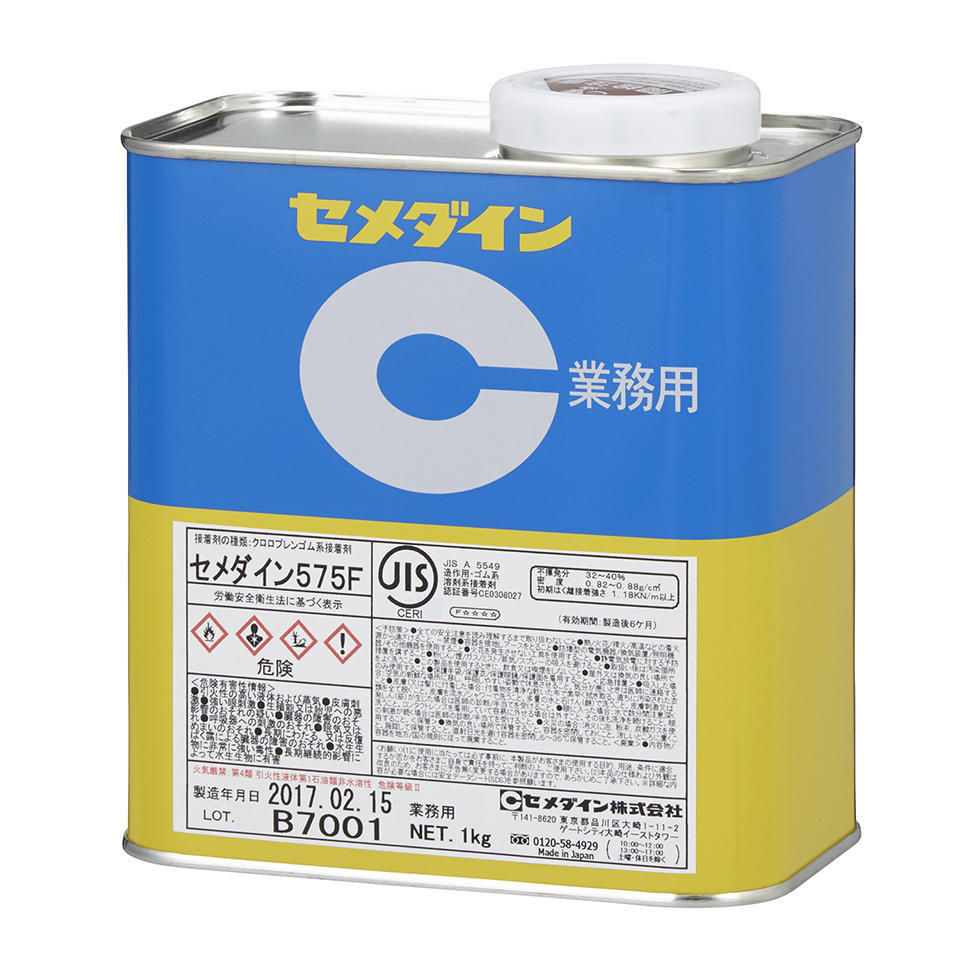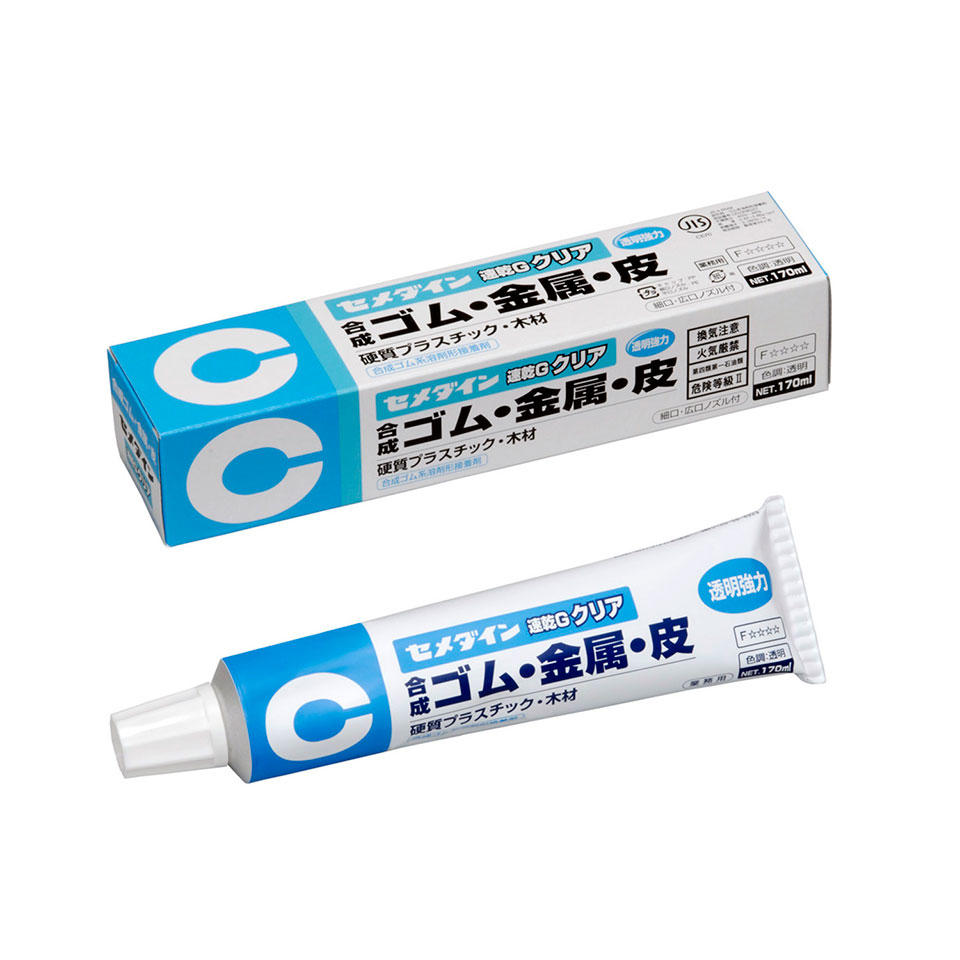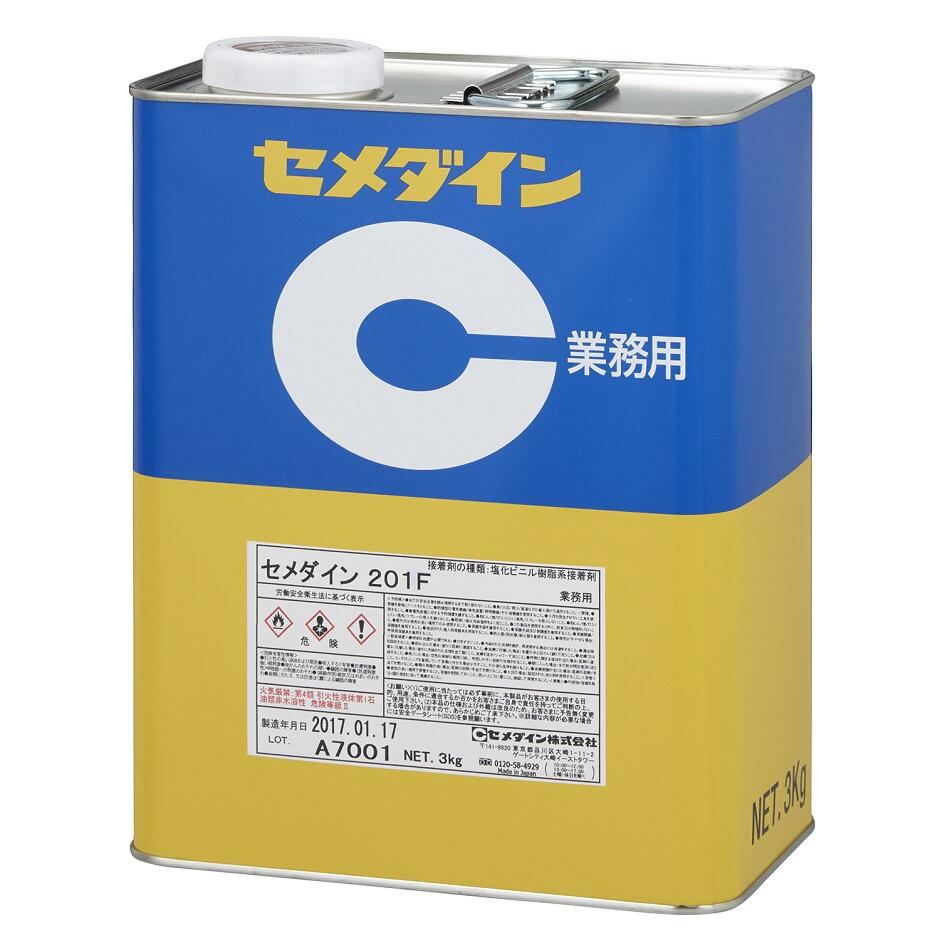Solvent-based adhesiveRubber solvent type adhesive / Resin solvent type adhesive
Rubber solvent type adhesive
Features
Various types of adhesion
- Contact adhesion
Adhesive is applied on both sides of the materials, which are put together after an open time of 5 to 30 minutes when the surface is dried up. This will provide adhesion featuring excellent initial strength without the need for temporary fixation. - Pressure-sensitive adhesion
Extensive pressure-sensitive adhesion area in the curing process will allow wide-area adhesion of foams and sheets by coating on one side, depending on the conditions. - Reactivated adhesion
Elastomer adhesive permits adhesion of the materials after the adhesive coated thereon is dried up and adhesive is reactivated by solvent and heat (about 100°C). - Heating and pressurized adhesion
Adhesion of the materials in the same way as heat reactivated adhesion followed up immediately by heat pressing will provide adhesion featuring excellent adhesive strength and heat resistance.
Diversity in coating
- Brush, spatula and special trowel
- Air spray, air-less spray
- Roll coater and curtain coater
Three big features of nitrile rubber
- Excellent oil resistance
- Superb adhesive property on plasticized polyvinyl chloride
- Good heat aging
Application
- Adhesion between rubber and metal
- Adhesion of foams such as foamed urethane and polyethylene (except for styrene)
- Adhesion of glass wool and rock wool
- Adhesion of boards and metallic plate
- Adhesion of decorated panel and plywood
- Adhesion of soft polyvinyl chloride product (only for nitrile rubber)
Product data
Tensile shear strength (Chloroprene rubber : 575F)
| 575F | Tensile shear strength | |
|---|---|---|
| Initial value | Heat resistant | |
| Plywood x Plywood | 3.64 | 1.00 |
| Melamine decorative board x plywood | 3.14 | 0.62 |
Bonding condition : Double coated,open time 20 minutes
Initial value tensile shear strength : measure the testing piece after leaving it unattended for seven days at room temperature.
Heat resistant tensile shear strength : measure the testing piece after leaving it unattended for seven days at room temperature and then heating it at 80°C for 20 minutes.
Peel strength (Chloroprene rubber : 575F)
| 575F | Peel strength | |
|---|---|---|
| Initial value | Heat resistant | |
| Canvas x Canvas | 7.5 | 3.5 |
| Canvas x Steel board | 7.1 | 4.0 |
| Canvas x Aluminum | 5.8 | 2.7 |
| Canvas x Melamine coated surface | 4.7 | 2.7 |
| PVC sheet x Aluminum | 6.7 | 1.5 |
| PVC sheet x Melamine coated surface | 4.1 | 1.3 |
Adhesion conditions : Coated on both sides, Open time of 20 min.
Initial value Peel strength : measure the testing piece after leaving it unattended for seven days at room temperature.
Heat resistant Peel strength : measure the testing piece after leaving it unattended for seven days at room temperature and then heating it at 80°C for 20 minutes.
Property (Chloroprene Rubber)
| 575F | CS4503F | 5430LF | SOKKAN GF | SOKKAN GF | ||
|---|---|---|---|---|---|---|
| Application / Properties / Features | Multiple use (standard product) | Multiple use (mainly for electrical parts) | For metal and rubber | Multiple use | Mainly for construction | |
| Type | Excellent initial adhesion strength | Excellent stringiness, initial adhesion strength, and heat resistance | High-viscosity product | Excellent initial adhesion strength | Excellent initial adhesion strength | |
| Application method | Brush | |||||
| Base | Chloroprene rubber | |||||
| Major solvent | Acetone | MEK | Acetic ether | MEK | Acetic ether | |
| Isopropyl acetate | n-propyl acetate | Acetic ether | Cyclohexane | |||
| n-hexane | n-hexane | n-hexane | Cyclohexane | |||
| Cyclohexane | ||||||
| External appearance | Light yellow | Light yellow | Light yellow | Light yellow | Light yellow | |
| Non-volatiles | wt% | 29.0 | 31.0 | 41.0 | 26.0 | 26.0 |
| Viscosity | mPa・s/23°C | 2,200 | 2,300 | 13,000 | 3,000 | 4,500 |
| Grade |  JIS A5549 JIS A5549 |
VOC grade | VOC grade |  JIS A5538 JIS A5538 |
 JIS A5538 JIS A5538 |
|
 |
4VOC grade | 4VOC grade |  |
 |
||
| Capacity | 180mL | 3kg | 180mL | 170mL | 1kg | |
| 500g | 15kg | 15kg | 3kg | |||
| 1kg | 15kg | |||||
| 3kg | ||||||
| 15kg | ||||||
| Check it at Online-Shop | ||||||
Description of the mark
Property (Chloroprene rubber based spray type)
| 5100F | G211F | ||
|---|---|---|---|
| Application / Properties / Features | Multiple use | Multiple use | |
| Type | Standard product | Heat resistance | |
| Application method | Air spray | ||
| Base | Chloroprene rubber | ||
| Major solvent | Acetone | Acetone | |
| Acetic ether | Acetic ether | ||
| n-hexane | n-hexane | ||
| Cyclohexane | Cyclohexane | ||
| Appearance | Light yellow | Light yellow | |
| Non-volatiles | wt% | 18 | 21 |
| Viscosity | mPa・s/23°C | 160 | 300 |
| Grade |  JIS A5549 JIS A5549 |
 JIS A5549 JIS A5549 |
|
 |
 |
||
| Capacity | 14kg | 14kg | |
Description of the markexplanation
Property (Nitrile rubber type)
| 542 | 546F | ||
|---|---|---|---|
| Application / Properties / Features | General-purpose adhesion of polyvinyl chloride | ||
| Type | Exsellent initial adhesive strength | Spray type | |
| Application method | Brush | Air spray | |
| Base | NBR | ||
| Major solvent | Acetone | Acetone | |
| External appearance | Light brown | Dark brown | |
| Non volatiles | wt% | 29 | 20 |
| Viscosity | mPa・s/23°C | 2,700 | 320 |
| Grade | Formaldehyde countermeasure product |
Formaldehyde countermeasure product |
|
| Capacity | 180mL | 3kg | |
| 1kg | 14kg | ||
| 15kg | |||
Description of the markexplanation
Property (SBS)
| SOKKAN G Clear | ||
|---|---|---|
| Application / Properties / Features | Multiple use | |
| Type | Transparent type | |
| Application method | Brush | |
| Base | SBS | |
| Major solvent | MEK | |
| n-heptane | ||
| Cyclohexane | ||
| External appearance | Transparent | |
| Non volatiles | wt% | 43 |
| Viscosity | mPa・s/23°C | 5,000 |
| Grade |  JIS A5549 |
|
| Capacity | 170mL | |
| Check it at Online-Shop | ||
Description of the markexplanation
Resin solvent type adhesive (Vinyl chloride resin type / Nitrocellulose type)
Features
Polyvinyl chloride
- These adhesives are made by modifying polyvinyl chloride (PVC) resins or polyvinyl chloride-acetate copolymers. They are particularly suited for bonding soft PVC materials, and have excellent features in terms of their adhesive properties and resistance to plasticizer migration.
Nitrocellulose
- Due to their fast-drying feature and a transparent color that ensures a beautiful finish, nitrocellulose adhesives are used for bonding a wide variety of materials used in modeling and crafting through to accessories and furniture.
Application
Polyvinyl chloride adhesives
- For bonding soft PVC materials (201F and 210F).
- For bonding of hard PVC pipes and PVC boards (PVC pipe adhesive).
Nitrocellulose adhesives
- For bonding materials such as paper, wood, leather, glass, ceramics, and synthetic resin (321).
Product data
Property (Vinyl chloride resin type / Nitrocellulose type)
| 201F | 210F (Nitrile modification) | PVC pipe adhesive | 321 | ||
|---|---|---|---|---|---|
| Application / Properties / Features | Between plasticized polyvinyl chloride materials | Between plasticized polyvinyl chloride and different materials | Unplasticized polyvinyl chloride materials | Wood, Paper, Cloth, Leather, Earthernware, Celluloid | |
| Type | Having excellent resistance to plasticizer | Having excellent resistance to plasticizer | Dope cement | Quick drying | |
| Base | Polyvinyl chloride | Polyvinyl chloride | Polyvinyl chloride | Nitrocellulose | |
| External appearance | Light yellow transparent | Polyvinyl chloride | Colorless transparent | Colorless transparent | |
| Non volatiles | wt% | 33 | 32 | 17.1 | 28 |
| Viscosity | mPa・s/23°C | 2.2 | 2.6 | 0.2 | 10.5 |
| Capacity | 180mL | 180mL | 100g | 180mL | |
| 3kg | 3kg | 500g | 1kg | ||
| Check it at Online-Shop | |||||
Check it at Online-Shop
※ The link destination is an external site.
※ The link will be broken due to the circumstances of the link seller.
Description of the mark

-
This mark means that products comply with RoHS Directiverequirements.

-
This mark means that products comply with Japanese formaldehyde emission standards for adhesives. These are set forth by the Japanese Industrial Standards (JIS) or Japan Adhesive Industry Association (JAIA).

-
This mark means that products comply with Japanese Voluntary VOC Regulating Rule for Indoor Air Pollution Control. These are set forth by Japan Adhesive Industry Association (JAIA).

-
This mark is a self-management mark for people and environmentally friendly products. We provide products that address environmental and health concerns, mainly for construction and housing applications.







